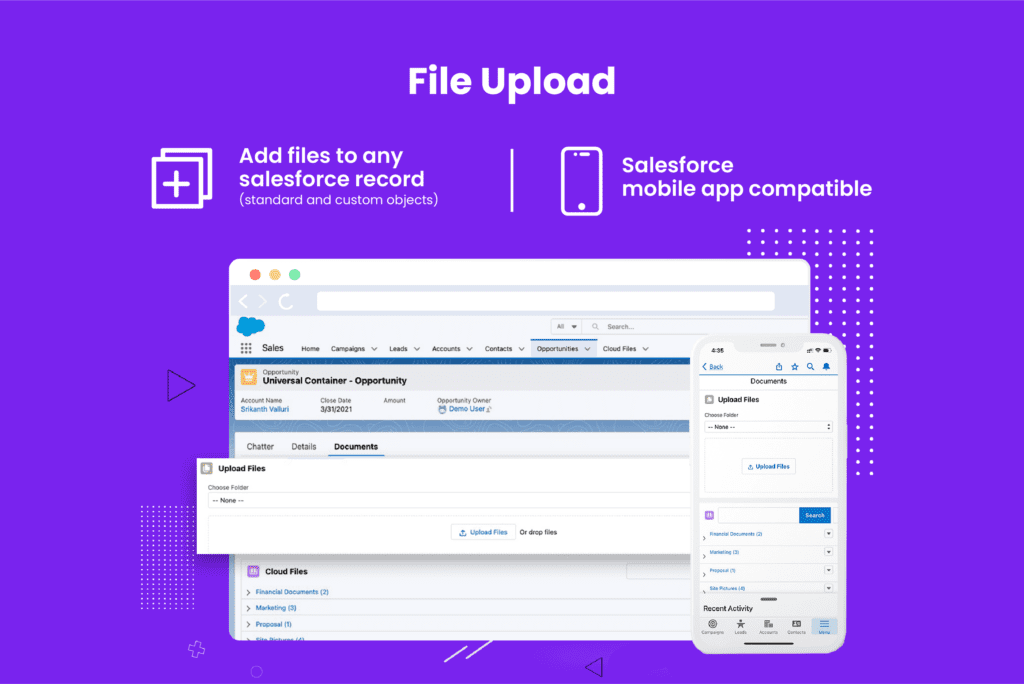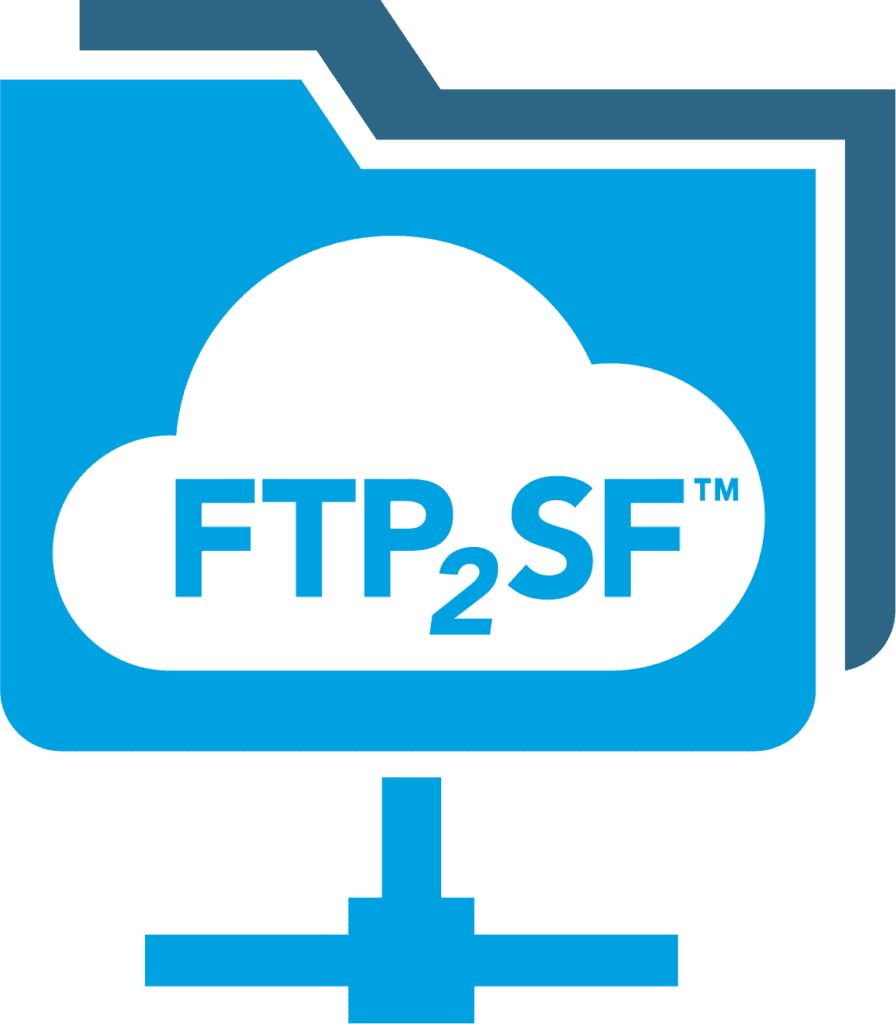Salesforce FTP Integration for Optimized Document Management

Companies rely on Salesforce as the central hub containing information about leads, sales deals, etc. However, only a certain number of team members within an organization can access it. If some information needs to be shared with stakeholders, a solution has to be invented. One of the possible options is the Salesforce FTP integration allowing companies to exchange data with external entities.
This article explains when and why the Salesforce FTP integration is necessary. It also discusses the benefits an organization can obtain by setting up data exchange. And finally, it provides concrete methods for configuring Salesforce integration with the FTP server.
Understanding Document Management in Salesforce
Salesforce permits working with the documents and files within the platform. The CRM system offers several features for document management, including Salesforce Files, Salesforce Content, and Salesforce Knowledge.
- Salesforce Files allows users to upload, share, and collaborate on documents, images, and attachments directly within Salesforce records and Chatter feeds.
- Salesforce Content provides a centralized repository for organizing and sharing files across Salesforce users and external stakeholders, with features such as version control, access permissions, and content delivery.
- Salesforce Knowledge enables organizations to create, manage, and publish knowledge articles, FAQs, and documentation for internal and external use, empowering users with self-service access to valuable information.
Overall, Salesforce document management aids businesses in streamlining document-related procedures, enhancing teamwork, and guaranteeing data integrity and compliance throughout the Salesforce ecosystem. However, users need to be mindful of the constraints it places in place. Those primarily refer to storage limits, file size, file formats supported, and the lack of advanced document management features.
Read Also: Essential Tech Tools to Run Your Business Effectively

The Power of FTP
FTP protocol is designed for file transfer between computers or through the cloud. The FTP server handles the upload, download, and deletion of files along with directory management. It provides advanced document management features lacking in Salesforce, which gives a reason to set up Salesforce FTP integration.
Here are some of the most significant FTP features:
- Access control. FTP servers often provide access control mechanisms to restrict access to certain directories or files based on user permissions. This allows administrators to control who can view, upload, modify, or delete documents.
- Version control. While basic FTP servers may not offer built-in version control features, users can manually manage document versions by renaming files or organizing them into versioned folders. However, this approach may lack the sophistication and automation of dedicated version control systems.
- Collaboration. Users can collaborate on documents by sharing access to specific directories on the FTP server. Multiple users can upload, download, and edit documents stored in shared directories, facilitating collaboration on projects or documents.
- Backup and recovery. FTP servers can serve as a centralized repository for storing documents, providing a backup in case of data loss on local computers. Regular backups of the FTP server ensure that documents are protected and can be recovered in case of emergencies.
Benefits of Salesforce FTP Integration
Connecting Salesforce to the FTP server might be applicable in many circumstances. For instance, it facilitates collaboration, document management, data exchange, and many other aspects of everyday work. Such integration also allows users to schedule data imports to update Salesforce records with new information from external sources. Additionally, it enables the setting up of routine data exports to move Salesforce information to other databases or reporting systems for backup or analysis.
Organizations may improve communication, automate workflows, expedite data management, and expand Salesforce’s capabilities by integrating Salesforce with FTP. Here are some other benefits companies obtain by once getting Salesforce and FTP connected.
- Enhanced file storage. Leveraging FTP for storing large files and documents outside of Salesforce’s storage limits.
- Streamlined file transfer. Facilitating the transfer of files between Salesforce and external systems using FTP.
- Improved collaboration. Enabling multiple users to access and share files securely through FTP integration.
- Scalability and flexibility. Scaling document management capabilities according to business needs with the flexibility offered by FTP.
Read Also: What is Customer Relationship Management? Why is it important?

Methods for Connecting Salesforce and FTP
Integrating Salesforce with FTP can be achieved using various methods and tools. Here are some common ways to integrate Salesforce and FTP.
Custom Integration Using Apex
Develop custom Apex code within Salesforce to interact with FTP servers using the HTTP or HttpRequest classes. This approach allows for customized integration logic tailored to specific business requirements, such as uploading, downloading, or managing files on the FTP server.
Salesforce Connect External Objects
Access data stored in FTP servers as external objects within Salesforce. Salesforce Connect establishes a real-time connection with external data sources, enabling users to query, view, and interact with FTP files directly from Salesforce.
Data Integration Tools
There are no-code and low-code data integration tools, such as Skyvia, that simplify FTP Salesforce integration. It already has pre-built connectors to both sources and offers different data integration scenarios. It takes several minutes to set up everything and schedule the data exchange between services.
RESTful Web Services
Implement RESTful web services on the FTP server side to expose file operations (e.g., upload, download) as REST APIs. Salesforce can then consume these APIs using Apex REST or External Services, allowing bidirectional communication between Salesforce and FTP servers.
FTP APIs and Libraries
To create unique integration solutions that communicate with FTP servers, make use of the FTP libraries and APIs that are available in programming languages like Python, Java, and Node.js. These APIs offer ways to programmatically execute file actions, enabling adaptable and personalized Salesforce integration.
Most of these methods consider a high degree of technical expertise. However, choosing Skyvia for integration simplifies everything, as it can even be used by non-techs without fatigue.
Conclusion
Connecting Salesforce with FTP is possible through RESTful web services and APIs, Salesforce Connect External Objects, and third-party data integration tools. The purpose of bringing these tools together is to facilitate file management and data exchange, enhance collaboration, and extend the functionality of Salesforce.






